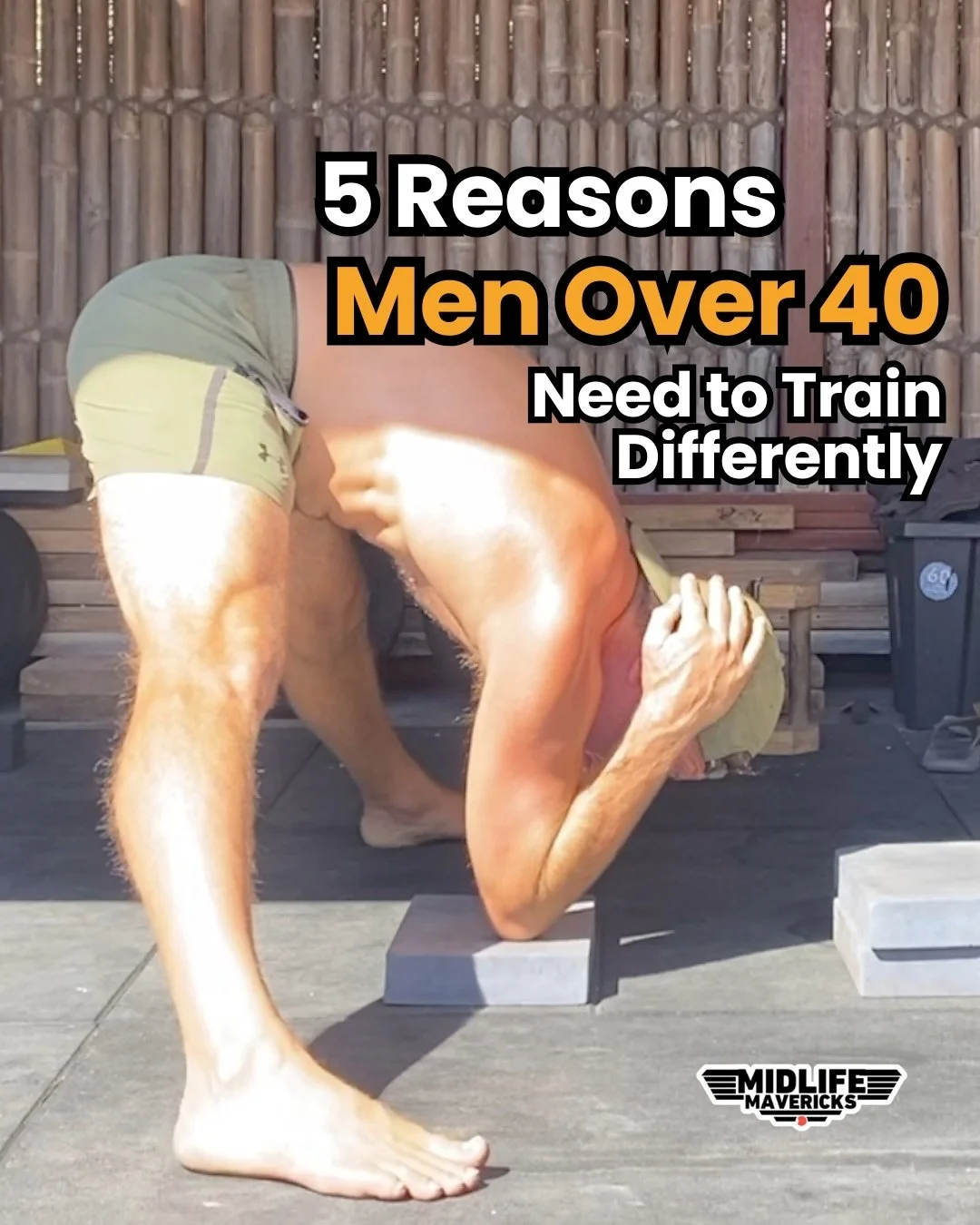
Stronger for Life: Why Strength in Midlife Builds Freedom for the Future
What you do in your 40s and 50s doesn’t just shape your body today, it shapes your independence, energy, and confidence for decades to come.
The science is crystal clear: muscle and strength built in midlife are some of the strongest predictors of health, freedom, and longevity later in life.
Let’s break down what that really means (and how to make it happen without training like a 20-year-old).

How to Protect Your Joints and Build Strength After 40
By midlife, most men carry battle scars, sore knees, cranky shoulders, and stiff backs. The problem isn’t that you’re old or broken, it’s that you’re still trying to train like you did at 25. The solution isn’t to stop lifting heavy, but to lift smarter.
Science shows that strength training is one of the best tools for protecting joints, reducing injury risk, and maintaining movement quality into later life.
Here’s what the evidence says about training sustainably, without breaking down.

Why Strength Is the Foundation of Health in Midlife (And the Research That Proves It)
Many men in their 40s and 50s rely on cardio workouts, circuit training or HITT classes to stay “fit enough.” Take Mark, a 50-year-old who jogs a few times a week and does body-weight circuits occasionally. He figures that as long as he keeps his weight in check and his heart pumping, he's healthy.
But recent science suggests a missing piece: building and maintaining muscle strength.

5 Reasons Men Over 40 Need to Train Differently
If you’re a man in your 40s or 50s, chances are you’ve noticed training doesn’t feel the same as it did at 25. Workouts that used to leave you feeling energised now leave you sore for days. The weights don’t move as easily. Injuries crop up more often. And somehow, the belly fat seems harder to shift, even if you’re “working just as hard.”
Once you hit 40, your body changes and your training needs to change with it.
That doesn’t mean giving up on strength, muscle, or performance. In fact, it’s the opposite. With the right approach, men in midlife can build strength, maintain a lean physique, and perform at a high level for decades. But the key is training smarter, not harder.
